In this post, we’re walking you step by step through making your own DIY cold brew coffee at home! The brewing process is easier than you may think and just requires a bit of time and patience.
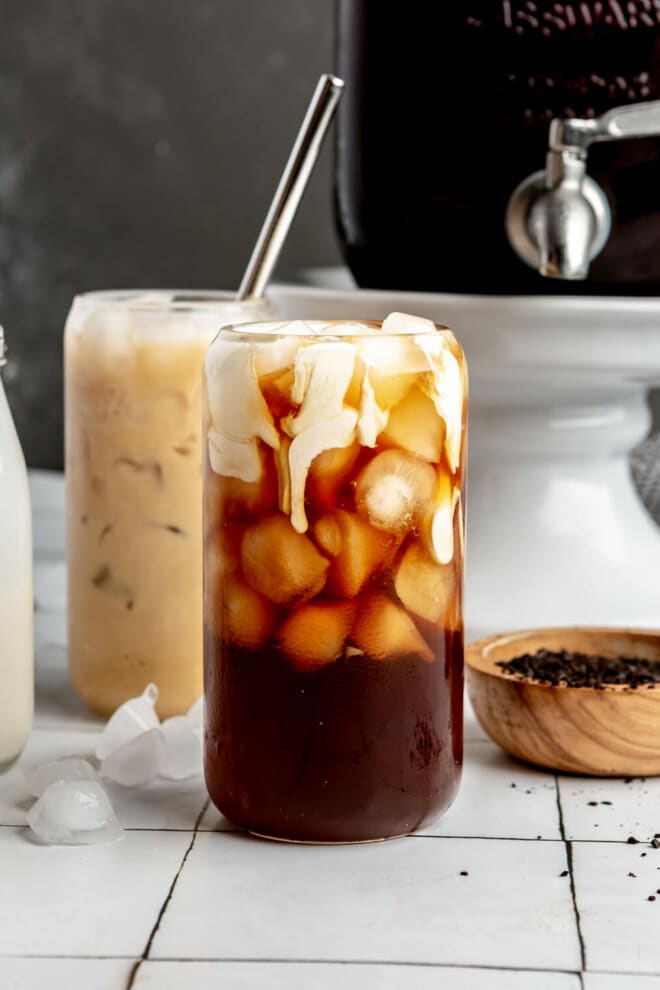
Table of Contents
- Why cold brew?
- How to Make the Best Cold Brew Coffee
- Can you use regular coffee beans to make cold brew?
- The Best Beans for Cold Brew
- The Perfect Ratio for Cold Brew Coffee
- What to Make Your Coffee In
- How long does it take to make?
- How to Drink Cold Brew
- Cold Brew Coffee Frequently Asked Questions
- More Favorite Drink Recipes
- How to Make Cold Brew Coffee at Home Recipe
If you, like me, have been using this extra time at home to experiment in the kitchen with things like sourdough starter or Dalgona coffee, then you should definitely add cold brew coffee to your list!
I’ve been a lover of cold brew coffee since Cassy got me hooked on it years ago when I joined Fed + Fit. I love that it is so smooth, just a bit sweet, and makes for the absolute perfect pick-me-up!
Over the years, I’ve gone through many phases of making my own cold brew (mainly to save money vs. buying it) but could never find just the right formula, or got frustrated by the effort involved. With the extra time on my hands though, I’ve finally nailed a recipe that I like even more than my beloved Chameleon cold brew!
Why cold brew?
So, what’s the deal with cold brew anyway? I mean, is it really all that different from iced coffee? I think so! Let’s talk about why you should consider this yummy twist on traditional coffee.
1. It’s Smoother Than Regular Coffee
While I love a cappuccino or an iced latte, cold brew is one of my go-tos because it is so much smoother than hot–brewed coffee or espresso. Traditionally, coffee is made quickly with boiling water to create a delicious, hot brew. If you want a cold beverage, the coffee or espresso is simply poured over ice. While this is definitely a tasty option, you can sometimes end up with an overly-acidic, too-strong iced coffee.
To make cold brew, you mix ground coffee and water and let it steep for 12-24 hours. All coffee beans contain oils where fatty acids are stored, and these oils are best extracted using hot temperatures. The cold, slow brewing process prevents many of the oils stored in coffee beans from being fully extracted, meaning that the acids contained within them aren’t present in the final product. This leads to a more mellow brew that allows the flavors of the beans to truly shine.
2. It’s Easier on Digestion
As we noted above, cold brewing coffee has been shown to produce a less acidic brew than regular coffee, with some claiming it is up to 60% less acidic. The exact amount varies based on the type of beans and brewing methods used. Many people find that this decreased acidity makes it easier on their stomach, so if you avoid coffee because you can’t tolerate it, it’s worth giving cold brew a try!
3. It Lasts for Weeks
While making cold brew may be a little more involved than brewing a cup of coffee, the good news is you’ll reap the benefits for weeks to come (depending on how much you drink). Once you have a batch, all you’ll need to do is pour it over ice and mix with your preferred add-ins, and you’re good to go!
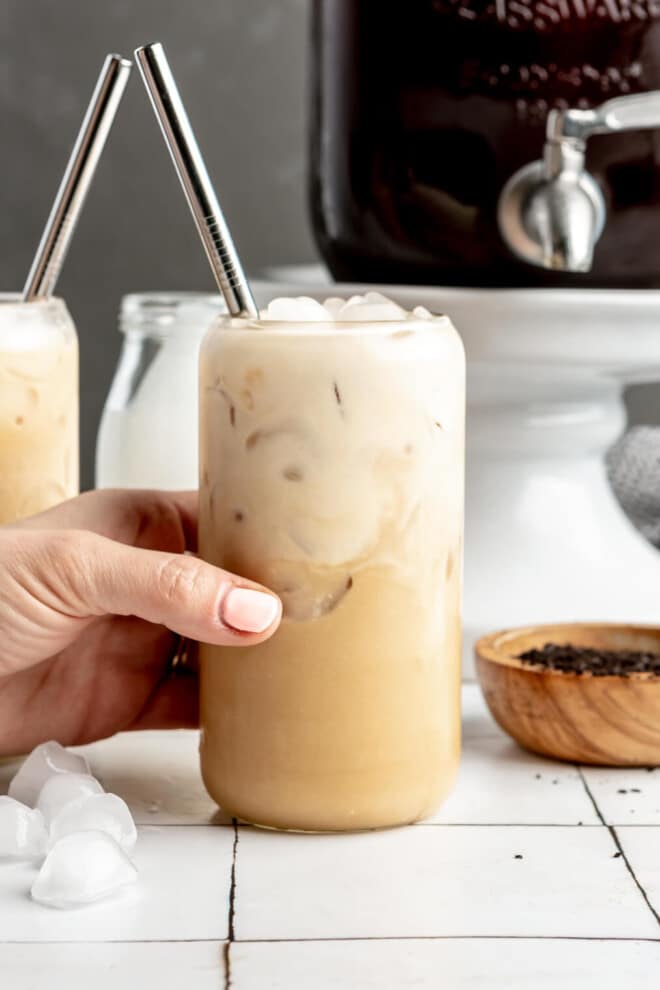
How to Make the Best Cold Brew Coffee
Ok, now let’s talk about how to make the best cold brew coffee. I once thought it wasn’t possible to beat what I was purchasing at grocery stores and coffee shops, but I’ve learned a lot of lessons along the way and now think that my homemade coffee is even better than store-bought!
Also, the process of making it sounds more intimidating than it actually is, all you need is a little bit of patience and the right materials. Let’s walk through it.
Can you use regular coffee beans to make cold brew?
Yes, you can use regular coffee beans to make cold brew, so your favorite coffee is a great place to start! However, we recommend using coarse ground coffee beans. If you use regular or finely ground coffee beans, you’ll wind up with a bit of thick, gritty sludge at the bottom of your cold brew jar. While this isn’t the end of the world, it definitely isn’t the tastiest when you reach the end of the jar. Using finely ground coffee also makes the process just slightly more difficult.
How do you find coarsely ground coffee beans? Here are 3 options:
- Buy them already coarsely ground. While this option may not be widely available at your local grocery store, you can often find coarsely ground beans on Amazon by searching for ‘coarse grind coffee beans’ or ‘cold brew coffee beans.’ You can also check your local coffee roaster, who may be able to grind the beans for you!
- Grind them yourself. Your next option is grinding the beans yourself. If you are very particular about your coffee, or like one specific brand, this may be your best bet. Luckily, coffee grinders are easy to use and you don’t need an expensive one! Look for one in the $20-$30 range like this one.
- Use the bulk coffee section of your grocery store. Many grocery stores have a bulk coffee section where you can buy beans and grind them right there. The grinders have settings from fine espresso to coarse grind, so you don’t have to invest in your own grinder! As a bonus, these beans are often cheaper than what you buy pre-bagged and are just as good, if not better, quality.
The Best Beans for Cold Brew
The quality of your cold brew is directly affected by the type of beans you choose to use! Since cold brew is lower in acidity, the flavors of the coffee itself are more prominent than in regular coffee. This means that if you use low-quality coffee, you’re going to REALLY taste the bad notes. For this reason, we recommend using a high-quality coffee. It may cost a bit more, but you’ll still be saving money vs. buying from the grocery store or coffee shop.
I’ve tried many varieties to make my coffee with, and I’ve found I prefer to use a medium to medium-dark roast because the long steeping process will produce a deep flavor that I don’t want to be overshadowed by roasting. At this moment, my absolute favorite to use has become this half-caff Mayan water process from Stone Street Coffee. It has the best flavor (I actually prefer it to store-bought), and I love that I can get a brew that’s lower in caffeine. I like to order in bulk from their website because they will coarsely grind the beans for you, and it’s a bit cheaper. Below are a few other options I’ve enjoyed:
- Stone Street Coffee Cold Brew Reserve – this is the full-caffeine version of the half-caff variety listed above. This coffee has been specially formulated for cold brew and makes a smooth, well-rounded coffee.
- Cooper’s Cask Organic Cold Brew Coffee – Cooper’s Cask has a variety of cold brew coffees that are all fair-trade, organic, and roasted in Rhode Island. I love this single-origin Guatemala blend because it is smooth and just slightly sweet on its own. This one is the closest thing to Chameleon to me!
- Tiny Footprint Organic Cold Brew – This cold brew is organic, fair-trade, and for every pound sold, Tiny Footprint will donate a portion of the proceeds to fund reforestation in Ecuador’s Mindo cloud forest. This is a medium-roast Ethiopian blend coffee that results in a yummy, rich brew.
- Bizzy Organic Cold Brew Dark & Bold – If you like a stronger, darker coffee, this one is for you! Bizzy’s beans are completely organic, coarsely ground, and ethically sourced from Guatemala, Peru, and Nicaragua. They still produce a smooth brew, but with a more bold flavor than the other beans listed here.
The Perfect Ratio for Cold Brew Coffee
While the beans are the foundation for making the perfect cold brew, the next most important thing is getting the right ratio of coffee to water. There are two ways you can make cold brew, and the ratio you choose really depends on the size of your container, how strong you like it, and how much coffee you want to make.
Ratio for Cold Brew Concentrate
More often than not, you’ll find that store-bought cold brew is actually a concentrate. This means that you’ll need to dilute it with water before drinking or you’ll have a very strong, highly caffeinated cup of coffee. We recommend this method when you’re using a smaller container, like a mason jar or French press (more on this below!). For a concentrate, you’ll use a 2:1 ratio of water to coffee – for example 2 cups of cold water to 1 cup of coffee.
Ratio for Ready-to-Drink Cold Brew
If you have a larger container, you may want to make ready-to-drink cold brew instead so that it’s quicker to prepare. In this case, you’ll use a 4:1 ratio, or 4 cups of cold water to 1 cup of coffee.
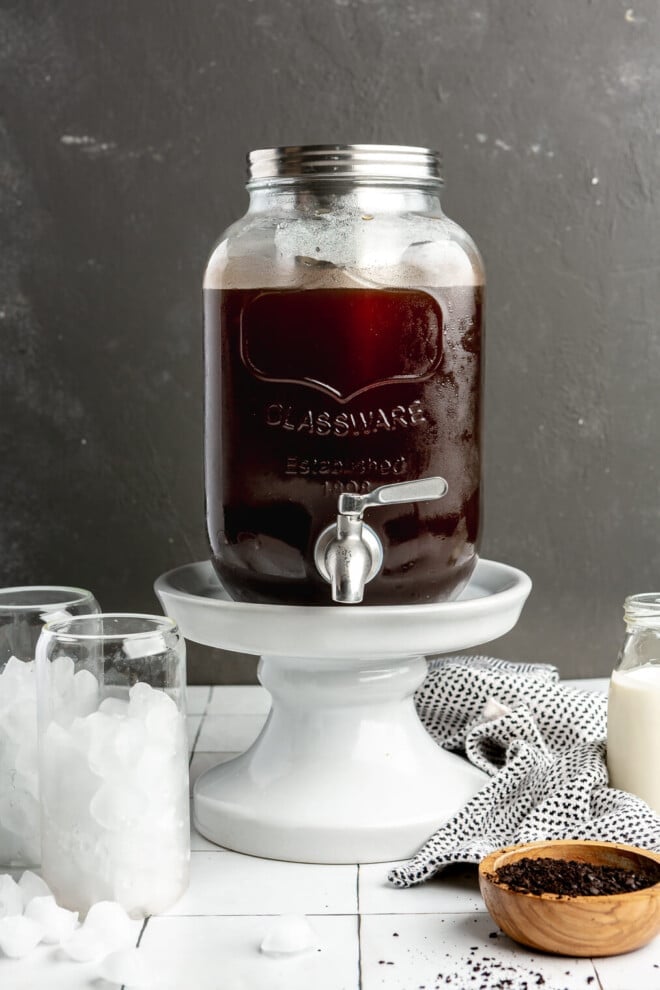
What to Make Your Coffee In
The next thing you’ll need to decide on is what to make your cold brew in! Below are a few of our favorite vessels:
Good: The Mason Jar Method
If you’re just starting out, a mason jar is perfect for testing your first batches of cold brew.
- What You’ll Need: 2-quart mason jar, coffee filters, fine mesh strainer
- The Method: Combine 1 cup coarsely ground coffee with 2 cups of cold water, then seal, shake, and refrigerate. After 12-24 hours, line the fine mesh strainer with a coffee filter, then pour the coffee through to separate out the grounds. It is ready to drink!
- Pros: This method is relatively straightforward, and uses pieces that you likely already have around the house.
- Cons: Straining out the coffee can be a bit messy, and I always found myself avoiding doing it. Plus, a mason jar isn’t the easiest thing to pour out of and I often found myself spilling coffee everywhere!
Better: The French Press Method
This method is also great to use if you are just starting out and aren’t trying to make a large batch of cold brew!
- What You’ll Need: All you’ll need here is a French press! After breaking a few glass ones, I highly recommend getting a stainless steel French press like this one.
- The Method: Combine 1 cup of coarsely ground coffee with 2 cups of water, cover, and refrigerate. After 12-24 hours, place the top on the French press and plunge it down to strain out the coffee grounds. Pour the coffee into a separate container and discard the grounds.
- Pros: This method is straightforward, only requires one piece of equipment, and straining is a breeze! Plus, you can use your French press to make delicious hot coffee as well.
- Cons: Discarding the coffee grounds can get a little messy – especially since you aren’t supposed to put them down your sink.
Best: The Cold Brew Coffee Maker
This is my personal favorite method! It allows me to make a large batch of cold brew with minimal effort and eliminates the mess and hassle of discarding the coffee beans. Plus you get cold brew on tap, what’s better than that?! If you are going to be making cold brew on a regular basis, a dispenser is well worth the investment.
- What You’ll Need: 1-Gallon Cold Brew Coffee Maker
- The Method: Fill the filter with 4 cups of coarsely ground coffee, then pour in about 13 cups of water. Refrigerate for 12-24 hours, then remove the filter, discard the coffee grounds, fill the pitcher with 3 more cups of water, and place back in the refrigerator. This will create a ready-to-drink brew!
- Pros: I love that you can make a huge batch (about 16 servings), because we go through coffee quickly. Plus, it’s ready to drink which makes it quicker to prepare my coffee. This is also the least messy method of getting rid of those coffee grounds.
- Cons: This can definitely get a bit heavy, you have to make sure you turn the dispenser all the way so it doesn’t drip, and it is not good for making a coffee concentrate, because the water won’t fully cover the coffee grounds at a 2:1 ratio. If you like the dispenser method but don’t need a gallon of coffee, I’ve had good results with this Takeya cold brew coffee maker as well, which comes in 1 and 2-quart sizes.

How long does it take to make?
I recommend making sure you brew for at least 12 hours, but no more than 24. The longer your brew goes, the more strong and caffeinated it will be.
How to Drink Cold Brew
If you’re using a concentrate, you’ll want to dilute your cold brew to be about 1 part coffee to 1 part cold water. You can also dilute it with a dairy-free milk for a creamy treat! Personally, I like to pour my coffee concentrate over ice cubes, dilute with an equal amount of water, then use a sweetener and a creamer for the perfect blend. Below are our favorite options.
Best Sweeteners
While you can drink your coffee black, a bit of sweetener can also be a great touch! You’ll want to use a liquid sweetener instead of something like granulated sugar though, so that it can mix into the drink. Here are our favorites:
- Pure Maple Syrup – This is my go-to coffee sweetener. It mixes like a dream and the flavor complements the coffee SO well.
- Honey – Honey dissolves well and is a great natural sweetener. It does have a distinctive taste though, so it isn’t everyone’s top preference!
- Simple Syrup – You can make simple syrup by boiling equal parts sugar and water, and it will keep for weeks in the fridge. If you really want to step up your coffee game, you can make your own syrups like our refreshing mint simple syrup, this vanilla simple syrup, or even this spring-y lavender simple syrup.
Best Creamers
While you can drink your coffee black, I love a bit of milk mixed in for a creamier consistency! In my opinion, nothing beats heavy cream or half-and-half, but if you’re dairy-free like me, there are plenty of close options!
- Heavy Cream or Half-and-Half – If you want a super creamy cold brew that tastes like a true indulgence, heavy cream or half-and-half is the answer! A splash of cream will go a long way. Simply mix your concentrate with an equal part of water, then add about 1/2 tablespoon of cream.
- Milk – regular dairy milk, almond milk, cashew milk, coconut milk (boxed, not canned), and oat milk all work here, but Milkadamia’s macadamia nut milk is my favorite dairy-free milk option for cold brew. It has a thicker, creamier consistency than other non-dairy milks and mixes up like a dream. If you’re using milk instead of creamer, you can mix your concentrate 1:1 with milk, or do 2 parts concentrate, 1 part water, and 1 part milk for a less creamy beverage.
- Non-Dairy Creamers – I have a dairy intolerance, so I personally gravitate toward non-dairy creamers for my coffee! After testing many, many options, I think that the hands-down best is So Delicious Original Oatmilk Creamer. It is super creamy, and the oat milk flavor really complements coffee nicely. Two others I like are Trader Joe’s coconut milk creamer and Milkadamia’s unsweetened vanilla creamer.
Iced or Hot?
While we’ve mostly talked about iced cold brew, you can actually drink it hot as well! If you want to drink your cold brew hot, I’d recommend warming it up on the stovetop for a minute or two then drinking. If you have concentrate on hand, it can also work as a great substitute for espresso in beverages like lattes and cappuccinos. Just substitute 2 ounces of concentrate per shot of espresso.
There you have it, our complete guide to making the best cold brew coffee – from the best coffee beans to our favorite creamers! We hope that this guide helps you feel confident about cold brewing your very own batch at home.
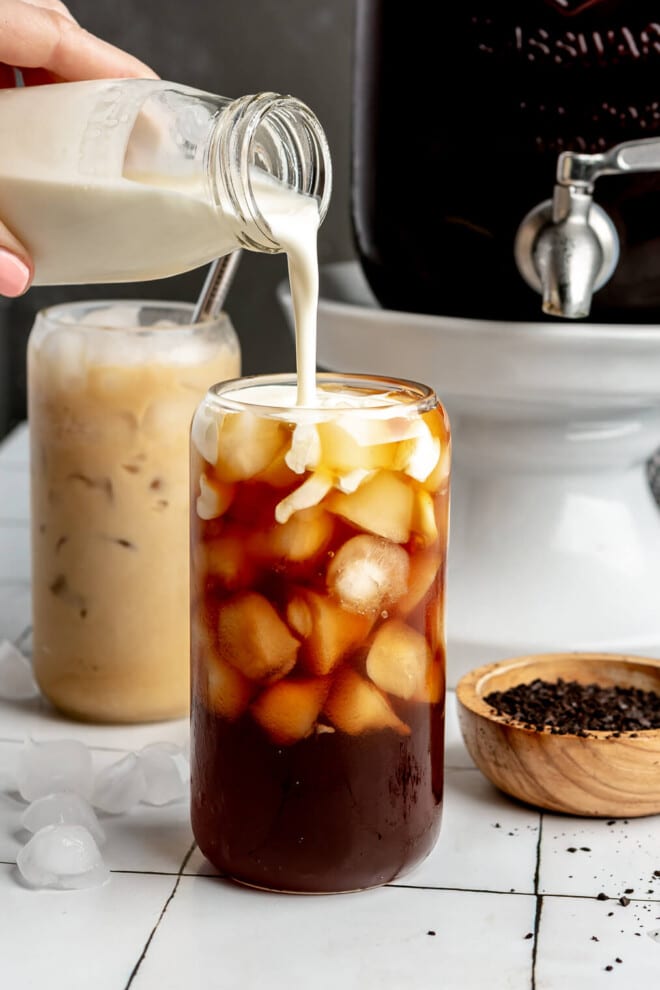
Cold Brew Coffee Frequently Asked Questions
Cold brew has a reputation of being healthier than regular coffee because its lower acidity is easier on the stomach and has less impact on tooth enamel. However, more acid isn’t necessarily a bad thing. Also, cold brewed coffee has also been shown to have a lower concentration of antioxidants than regular coffee, and it has a higher concentration of caffeine. Our take? Both types of coffee are great options, but if you can’t tolerate regular coffee, suffer from stomach problems like GERD, have been advised to avoid acidic foods, or just simply love iced coffee, cold brew may be worth a try!
While cold brew may not taste stronger than regular coffee, it typically has a higher caffeine content. It is a common misconception that this is because of the longer brewing time. Interestingly, the cold brewing process actually extracts less caffeine than hot water does, but cold brew uses a higher ratio of coffee to water, which is the real cause of the increased caffeine content.
How much more caffeine are we talking? An average 8-ounce cup of coffee has about 95 mg of caffeine, one shot of espresso has about 63 mg of caffeine, and one 8 ounce serving of cold brew (or 4 ounces of concentrate) has about 200 mg of caffeine. That’s over double! This is one of the reasons why so many people love cold brew – it gives you a serious buzz.
I’d say the top reason to DIY your cold brew over buying it is to save money! The average bottle of Chameleon cold brew costs $9.99, which adds up to about $2 per serving. Between my husband and I, we were going through about 2 bottles a week – which adds up quickly! Depending on which beans you buy, you can usually make your cold brew for right around $1 per serving.
The other thing I like about making my own is that I can control the caffeine content. As noted above, cold brew has more caffeine than your typical cup of coffee. Since I’m caffeine-sensitive, but love the lower acidity, I use a half-caff coffee to make mine, which means I can drink my cold brew without getting jittery!
More Favorite Drink Recipes
How to Make Cold Brew Coffee at Home
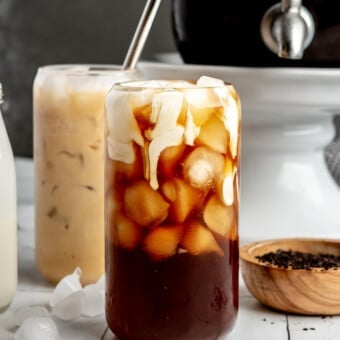
Ingredients
- 2 cups coarsely ground coffee
- 4 cups filtered water
Instructions
- Place the coffee grounds in an 8-cup French press (ideal), a 2-quart glass mason jar, or a medium-sized glass bowl. Pour the water over the coffee grounds, cover, and refrigerate for at least 12 hours but no more than 2 days.
- Press the French press stopper down to separate the grounds from the coffee, or strain the grounds through a fine-mesh strainer lined with a coffee filter. Pour the coffee into a mason jar or pitcher for storage.
- To serve, mix 1 part cold-brew concentrate (about ½ cup) with 1 part cool water (about ½ cup). Serve over ice with your favorite coffee creamer!
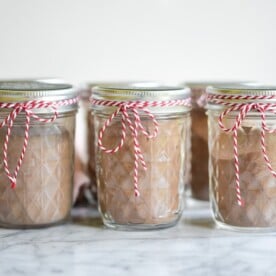
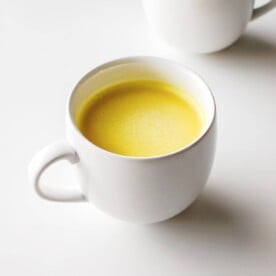

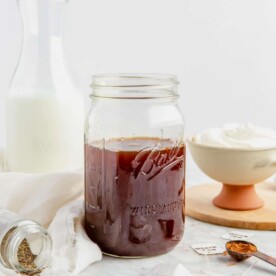
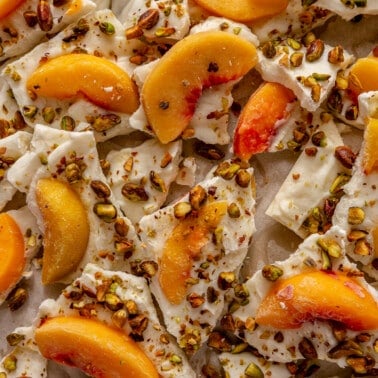
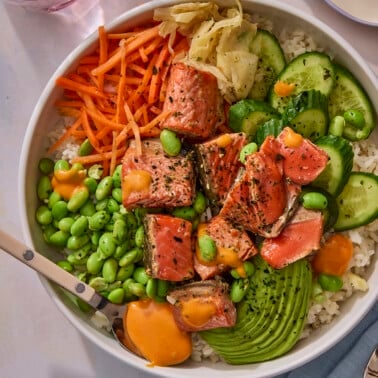
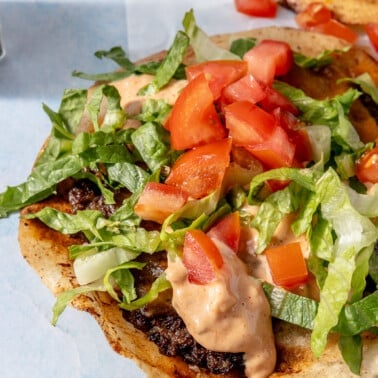
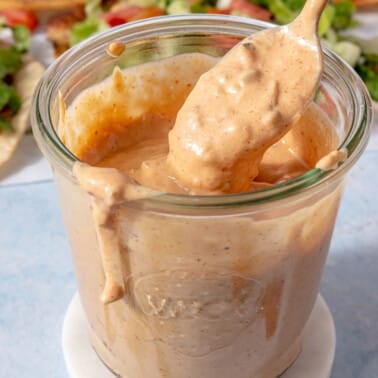








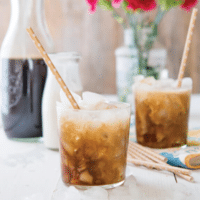
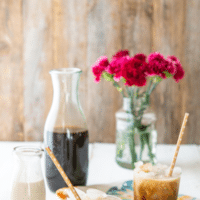
Loved this guide, so simple and easy to follow! I’ve just started making cold brew at home and it’s been a game changer. If you’re looking for a great coffee to try it with, I highly recommend the Honduras Coffee from Tiny Footprint: https://www.tinyfootprintcoffee.com/products/honduras-coffee. Smooth, rich, and perfect for cold brew!
Yum! We are so happy you enjoyed it, Velma!
This is possibly the most ads I’ve seen visiting a website in my life. To the point that the page refreshed itself two times, losing my place while fishing through ads to read what was probably the biggest waste of time aside from the ratio. So thanks for that. Won’t be checking this page ever again.
Thank you for the feedback, Nick.
Found your post interesting to read. I can’t wait to see your post soon. Good Luck with the upcoming update. This article is very useful, interesting, and effective.
Thank you!
10/10 Recipe!
I love Cold Brew and I usually make myself to last me a couple of days.
My current setup – Fellow ODE Grinder, Hario Cold Brew Bottle ~ 13 Hour brew.
I made an app to track your Home Cold Brews! Simply create a new brew, add categorization, slide the timer to your desired length, and you’re off! You will get also notified when your brew is done so you can take it out at the time you want.
Try out Brewli 🙂 https://apps.apple.com/us/app/brewli-cold-brew-tracker/id1606796873
Hi Jeremy! Glad you enjoyed the recipe. Thanks for sharing! ~Melissa
Thanks for this recipe and the recommendation on the gallon jar! Any suggestions on fitting 4 cups of coffee inside? After about 3.5 and the water, my coffee is up near the top. Do I need to pour water slower?
I usually get between 3.5 and 4 cups too. I just do as much as will fit, and don’t worry *too* much about the measuring! Your cold brew will still be spot on and super yummy with 3.5 cups!
Good morning! I was wondering if you had a link for the smaller version cold brew that was used in live video. I don’t need a large serving like you gave linked in the website link.
Both the 1-quart and 2-quart options are listed in the article! They’re under one link, but once you get to Amazon, you’ll have the opportunity to pick which size you want to purchase. Enjoy!
This is such a great guide, thank you!! I’m a Chameleon fan as well, but it gets pricey for sure . I love my French press, so I’ll be trying that method!
Agreed!!! Enjoy!
Thank you for this. I have been making my own cold brew for a while but it was great to read about alternate methods. You also do a great job of explaining the “why” behind the process. Very informative, thank you!
So glad you found it informative! Cheers to homemade cold brew!
For the mason jar method, look into using a CoffeeSock (made in Austin) or a disposable cold brew filter bag. Essentially they are satchels that contain the grounds means you don’t have to pour through a filter.
https://coffeesock.com/coldbrew
No Mess Disposable Cold Brew… https://www.amazon.com/dp/B07FQXGQJL?ref=ppx_pop_mob_ap_share
What a GREAT tip! We just added it to the article. Thanks so much, Melissa!